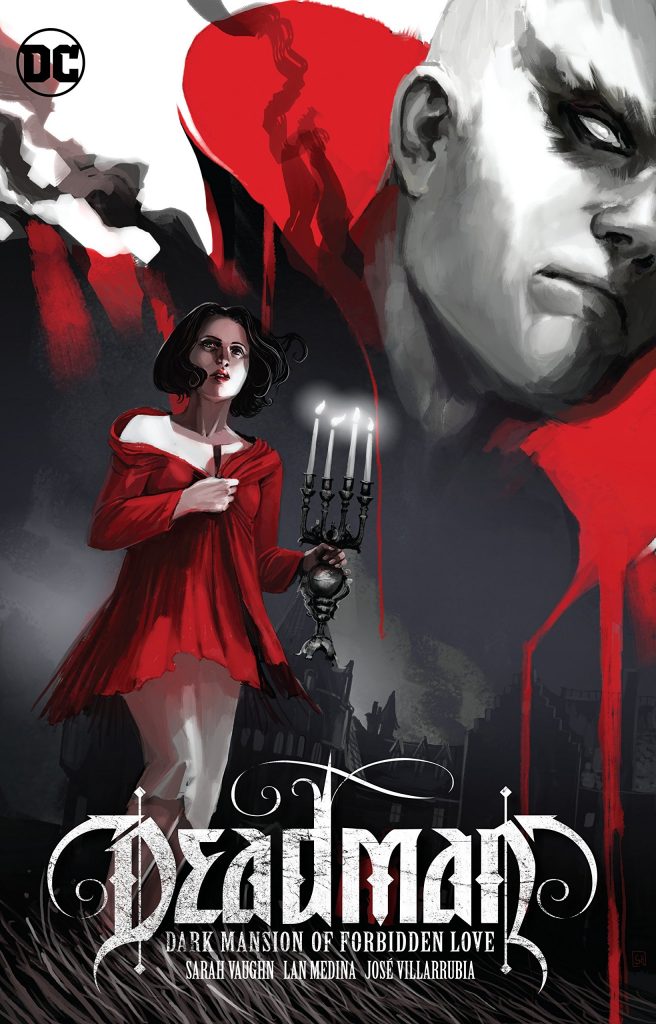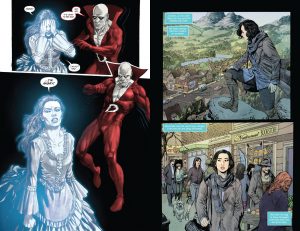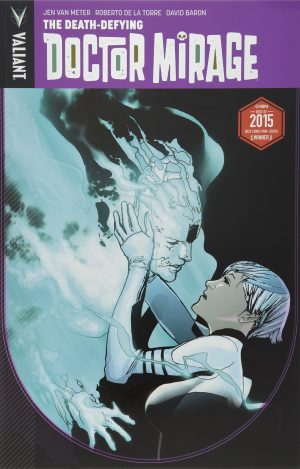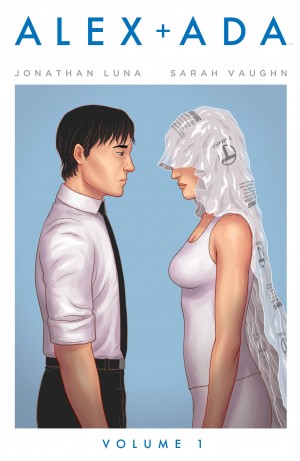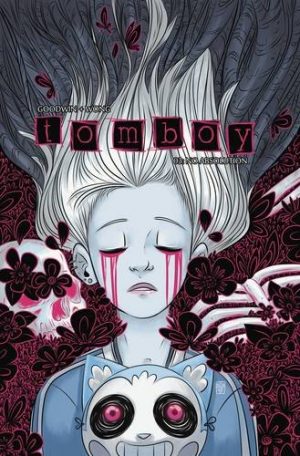Review by Ian Keogh
Berenice can see what other people can’t. It something she’s come to terms with, and as long as she avoids places where atrocities have occurred, she’s generally okay. Among what she can see is Deadman, former costumed aerialist now a ghost, but able to communicate with the wider world by possessing others. Berenice sees him in the spooky old mansion her writer partner Nathan was left by a dead uncle, with Deadman’s frustrated he can neither move through walls nor possess anyone in the house. He’s also unable to leave it.
Writer Sarah Vaughn placing restrictions on Deadman in effect creates a locked house mystery. He’s able to communicate with Berenice, but neither can be sure why he’s trapped, nor the purpose of the invasive ghostly smoke. Lan Medina puts the work into creating a mansion occupied by the privileged in days gone by, supplying the wooden panelling, wicker grating, portraits and the ornate features. For the rare spells outside the house he creates an appealing small town and surrounding countryside, again richly detailed. He’s surely grateful for the sequences requiring just figures among an ethereal background, and makes the most of those also, giving the ghosts a startling presence. If Medina handles their expressions, the colouring of José Villarrubia ensures a memorable look. He slightly mutes the bright red of Deadman’s circus costume to better fit the environment while still ensuring he’s the singular presence to stand out, the eye drawn to him in every panel.
While Medina and Villarrubia construct the visual atmosphere Vaughn’s foreboding captions seal the gothic mood. This is an unusual use of Deadman in that the story hinges as much on his being unable to possess people than possessing them, but he fits the prevailing atmosphere. Berenice is well presented as having come to terms with what she can do, but uncertain about who this should be revealed to, the lack of disclosure complicating the plot. A weakness is not properly addressing the uncertainty of conflicted personal attraction. Nathan hovers in the background, but there’s no depth to Berenice’s interactions with him, and when the final chapter revelations arrive they’re weaker for that depth being absent. The full horror manifests along with those revelations.
Gothic romance is a type of story long vanished in comics, and DC haven’t really thought through their use of the Dark Mansion of Forbidden Love subtitle. It’s presumably lack of thought rather than malice, but in wanting to connect with readers who may remember the title from the 1970s, they’re also opening themselves up to accusations of insensitivity given the relationships in the cast. Accept it as an unthinking error, and this is a tidy piece meeting genre expectations.
